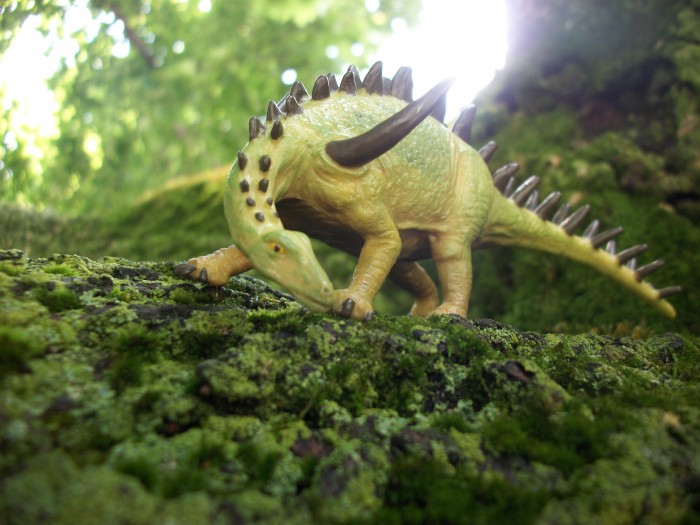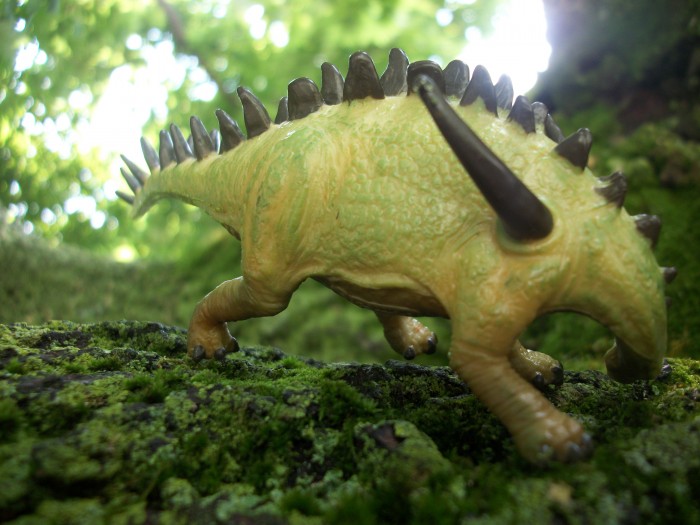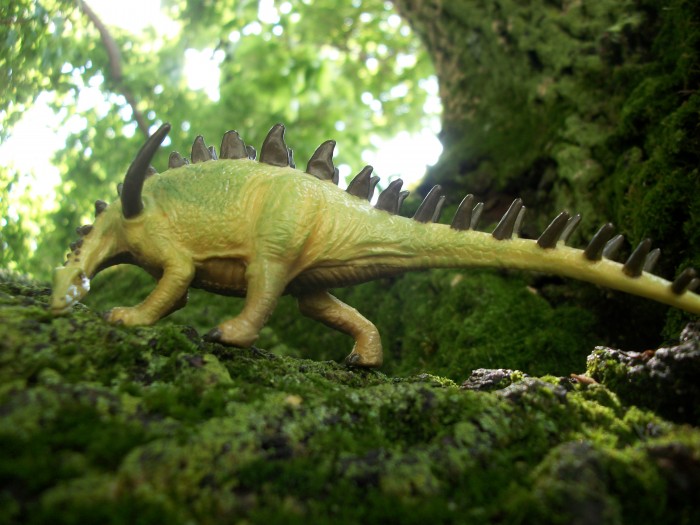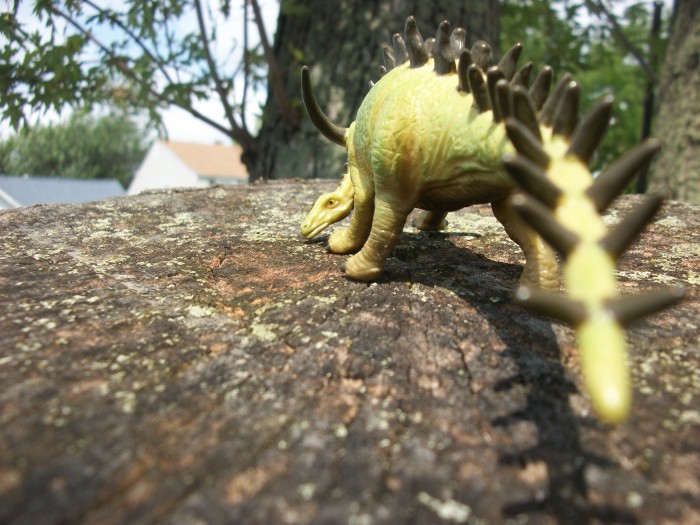I feel bad for the great stegosaur of the British Isles. Since it was discovered in the 1880’s it has gone through routine name changes and identities. Lexovisaurus is a stegosaur with few known fossils, basically some pieces of plates, hips, limbs, and vertebra are known. They have been found in England and in France in middle Jurassic rock layers, but now the bones from France may actually be from a different stegosaur, the names are Nomina dubia. So that begs the question, in the realm of toys, how has the 2007 Procon, (now CollectA) Lexovisaurus held up.
About the toy: The model is small with a small head and a robust mid section and a thin long tail. Now what makes a stegosaur family so much fun? Of course it’s the plates and spikes. There are 42 plates / spikes arranged along the spine starting with very small ones at the beginning of the neck. The plates turn flatter and taller over the hips, and turns into spiky plates down the tail. There are two massive shoulder spikes that arch backward. The plates are arranged two by two and there is no constancy on the shape of neighboring plates. The legs are spaced as if it stopped in mid walk, with 4 toes on the front feet and three toes on the back feet. The legs are thin with little muscle mass. The tail is long and curve ever so slightly to the same side as the head. The head is small and is very generic with a tiny jaw. The head is pointed slightly over 90 degrees to the side, it is either looking back to see what’s behind, just ran into a tree, or thinking about nibbling on a tasty morsel.
The paint job is a generic dinosaur coloring. It starts with dark brown on the plates that seem to be neatly but thickly painted on. The toes are also dark brown. The skin is yellow and green blend, and the eyes are yellow.
Texturally it feels very smooth, even though it is covered in small scales on the body. The scales are different sizes, and there are some appropriate skin folds that give the model some life. It also has some nice skin bulges where the shoulder spikes attach to the skin.
Scientific accuracy: It has been hard on researchers to determine all the detail with fragmentary remains. It is estimated it was 5 to 6 meters long and around 1.5 tonnes. It has been suggested that Lexovisaurus is actually closer in anatomy to Stegosaurus Stenops. than to Kentrosaurs from Africa, but that may be due to the small amount of known material to compare. Starting with plates, not enough has been found to know how many or what shape they all where though I would guess there would be less then there are on this model. There is even debate if it had shoulder spikes or not. The one thing I would have liked to have seen is texture on the plates. Only two stegosaur plates have been found with textured plates, one was Stegosaurus, the other was Lexovisaurus.
The head is small and generic on the model and since no skull has been found I am not sure if I should hold it against them when they could have copied a Stegosaur head. The feet have four toes in the front and three toes on the back which is consistent with Stegosaurs, even though no feet have been found on Lexovisaurus.
Playability: It is small but a pleasant toy for kids to play with. The paint is tough and will hold up to daily playing. The spikes and plates look cool and are bendy so it is rather safe. The tail also beds but holds its shape well.
Overall appraisal: It is not a home run, especially with the drab colorization, but it is not horrendous. The pose is interesting and its generic head is kind of cute, so it has some appeal and personality. If you are worried about scientific accuracy, I would toss those concerns right out the window, since there just isn’t enough material to really know.
Available on Amazon.com
Disclaimer: links to Ebay and Amazon on the DinoToyBlog are affiliate links, so we make a small commission if you use them. Thanks for supporting us!







A very nice review, thanks! It’s pleasant to see a model of a less known specimen from my own region. (West of Europe as a whole)
I have it too, it indeed is a pleasant model.